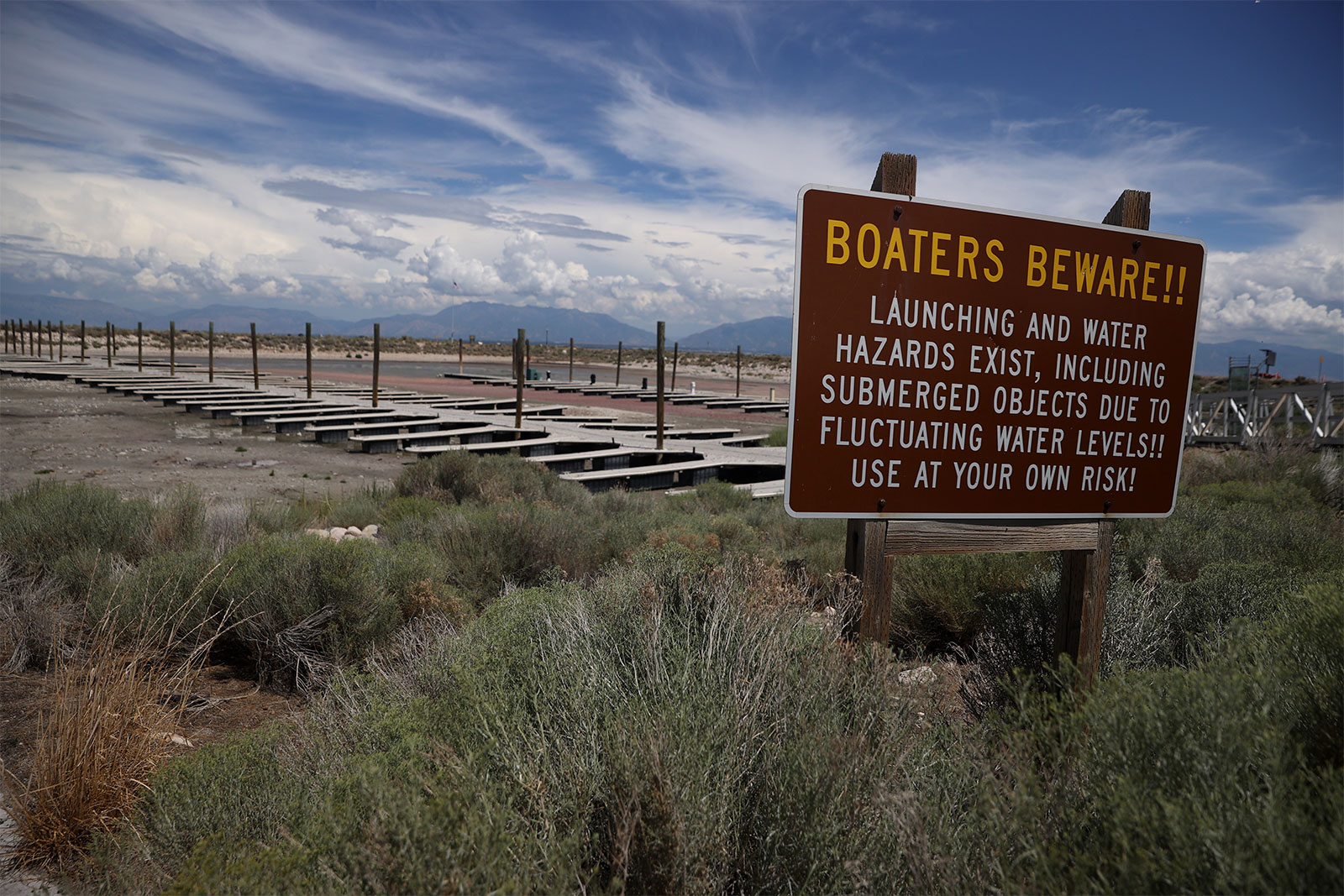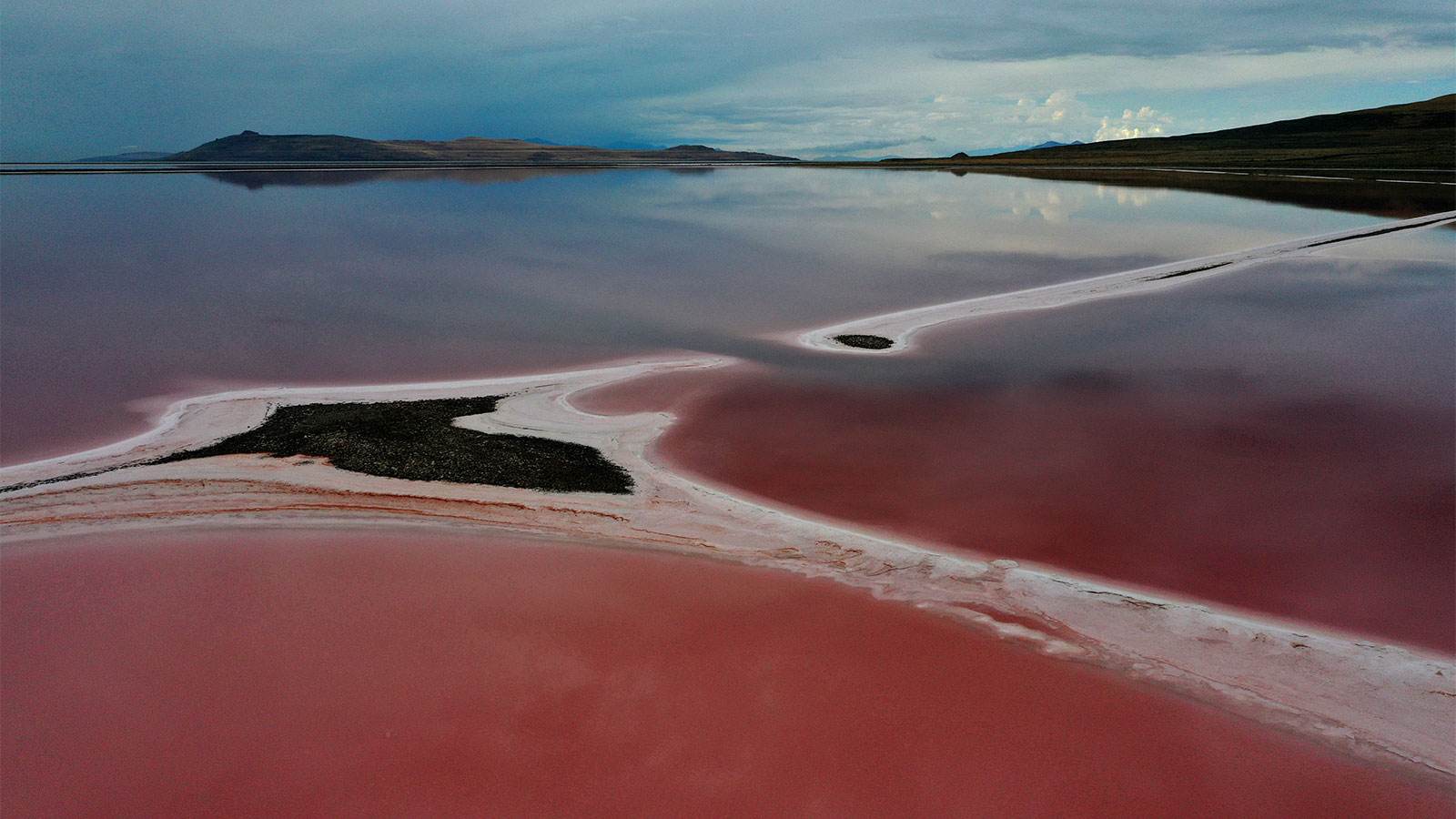To combat the biodiversity crisis, the Sierra Club supports establishing a national goal to conserve at least 30 percent of U.S. land, and 30 percent of U.S. ocean areas by 2030. Known as the 30×30 Agenda, this campaign has the potential to not only benefit wildlife, but improve outdoor equity and expand representation of historically marginalized groups on public lands. This three-part series explores the potential implications of such measures from locations across the country.
Standing on the exposed dust of Great Salt Lake’s growing shoreline, biologist Bonnie Baxter recently shared an obituary she wrote mourning Great Salt Lake. “The Great Salt Lake experienced her final, glimmering sunset today,” she said in a video recording the performance. It’s just one way Baxter is trying to educate people—and garner support to save the lake before it’s too late.
Its water levels hit an alarming record low in 2022. Utah’s state legislature took steps to develop emergency mitigation plans, calling for additional conservation, but these were shelved after the winter delivered a record snowpack. Nevertheless, experts warn that the need for political action is still critical. Without taking drastic and immediate measures, Great Salt Lake’s unique ecosystem is in grave danger.
For Maria Archibald, the lands and water programs coordinator with the Utah chapter of Sierra Club, this is a crucial moment for the region. The global climate crisis is driving unprecedented cycles of extreme precipitation, drought, and wildfires in the western United States, she says, but the ability to save Great Salt Lake is still in human hands.

Understanding localized impacts of climate change is complicated, but Archibald says the lake’s desiccation “is an issue that’s within our control.” She points to a recent report by the Great Salt Lake Strike Team, which is made up of researchers from the University of Utah and Utah State University. It estimates human water usage is responsible for more than two-thirds of the lake’s decline.
The report found the minimum water level for the lake to be healthy is an elevation of 4,198 feet above sea level. In 2022, Great Salt Lake dropped to a record low about ten feet below that. That may not sound like a huge difference, but to get the lake back to a sustainable level will require saving a million acre feet per year—enough water to cover roughly a million football fields a foot deep.
Great Salt Lake is a terminal body of water, meaning there are no outflowing rivers or streams. With four rivers flowing into the lake, Archibald says it’s no mystery where the water to save the lake needs to come from. But the solution isn’t as simple as turning off the tap. There’s tense competition for water resources from real estate development, agriculture, mineral extraction, and other industrial uses—with many livelihoods at stake. “How are we economically supporting water users through this transition that needs to happen?” Archibald asks.
Still, Archibald says getting public officials to set and adhere to tangible water conservation goals could have immediate effect. “I think Utah’s sort of in the hot seat right now, because there’s other states in the West that have made really big commitments to water conservation,” she says, “and Utah refuses to do so.”
But practical legislative changes have been slow to materialize—even a non-binding resolution affirming support for a target lake level at sustainable levels recently failed to even be seriously discussed. There has been some progress to change outdated “use it or lose it” agricultural water policies that force farmers to utilize their full water rights each year or risk losing them in the future, but Archibald says the effort is undercut by a lack of monitoring. “A farmer could want to do water conservation,” she says, “but have no idea whether the decisions and the sacrifices they’re making upstream are actually benefiting the lake and the communities that depend on it.”
This disconnect makes it even more essential for the general public to understand what steps it will take to save Great Salt Lake. For Bonnie Baxter, who has helped build school curricula, guided research, and engaged with everyone from children to community elders, education is a pivotal part of her work. “With Great Salt Lake in crisis,” she says, “scientists really have a responsibility to speak with the public.”
Baxter’s current research centers on the lake’s food chains, focusing on two crucial species—the brine fly and brine shrimp—that live and reproduce in its saline waters. Both species are suffering as the lake’s level drops and its salinity rises. The brine fly, for instance, thrives in water between nine and twelve percent salinity; with record low water levels in 2022, the water in the lake’s south arm was at 19 percent salinity. “Last year, we noticed the population was missing,” Baxter says. “They just crashed.”
As part of the brine fly’s life cycle, larvae swim down to feed on and cocoon in microbial mats on the lakebed. Baxter says the larvae were either unable to swim down because the saltier water made them too buoyant, or the microbial mats themselves were dying because of the increased salinity or exposure.
The story for the brine shrimp is similar: Saltier water prompted brine shrimp to reproduce abnormally early, with embryos that would normally overwinter instead hatching in the fall. “We don’t know what it will look like this year,” Baxter says, “if we’ll see ramifications from that—if we’ll see less adults in the lake or not.” But that kind of uncertainty gives Baxter pause. More than 10 million birds come to Great Salt Lake each year, and many of them rely on either the brine fly or brine shrimp as crucial food sources. Some birds eat both, Baxter says, “but some birds are wholly dependent on shrimp and some birds are wholly dependent on flies.”
Baxter recognizes it may not be the fate of billions of brine flies or millions of birds that helps return water to the lake, but hopes to help people recognize their own connections and reliance on it. “The brine shrimp industry, the mineral extraction industry, the ski tourism industry—and it is the air quality issue, which affects everybody—that’s what the legislature is responding to.”
For some advocates of Great Salt Lake, the small measure of progress feels insufficient. While Utah legislators declared last year “the year of water,” no significant modifications have been made to upstream water diversions. Meanwhile, the state continues to pursue development that will worsen the problem, including the Bear River Development project, which would siphon over 200,000 acre feet a year from the lake’s primary water source.
These decisions have real public health consequences. As the lake’s level dropped to record lows, it exposed over 800 square miles of dusty shoreline. This dust contains metals like lithium, arsenic, copper in concentrations above Environmental Protection Agency limits. While researchers say more data is needed to understand the long- term potential health impacts on regional communities, increased air pollution poses significant risks to vulnerable populations, and is linked to respiratory and heart disease. The
After the state announced $40 million in January to develop plans to support the lake, Darren Parry—a former chairman of the Northwestern Band of the Shoshone Nation—shared his ongoing disappointment that Native people, who have lived in the area for millennia, have not been included or consulted in the state response to the crisis. Parry expressed his support for the scientific efforts to save the lake in an article in the Salt Lake Tribune, but said, “all the science in the world will not make up for our selfish behaviors. To assume scientific knowledge is superior to Indigenous wisdom, that kind of thought process can be harmful.”
Finding a way to incorporate the concerns of the many communities who surround the lake will be important for any long-term conservation. If done well, Baxter believes the Great Salt Lake ecosystem can be a web that ties the region together. “This lake is in the fabric of people who live in Utah,” she says, “and now that it’s threatened, they are stepping up.”
Scientists say we need to safeguard 30 percent of America’s land by 2030 to avoid mass extinction and climate catastrophe. The U.S. ranks as one of the top countries in the world when it comes to wilderness-quality land. Right now, roughly 12 percent of that is protected land—and the Sierra Club has played a role in saving nearly all of it. That means we have to protect more lands in the next decade than we did in the last century. With an ambitious agenda and strong local advocacy, we can still conserve much of these natural areas. Every acre counts.




